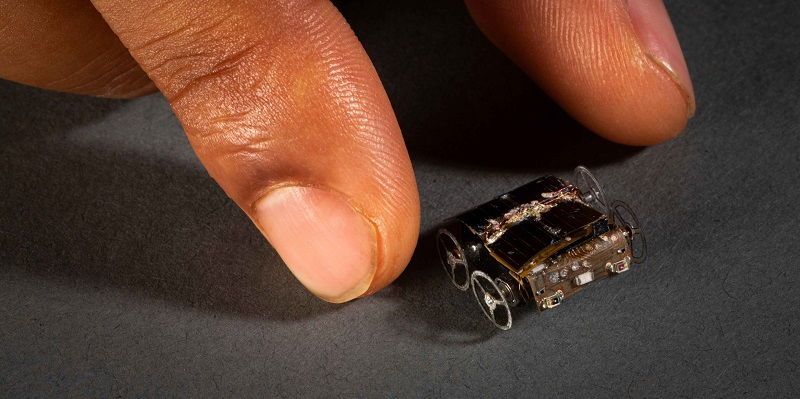The field of robotics has made significant strides in recent years, with researchers continuously pushing the boundaries to create innovative and autonomous machines. One such remarkable creation is MilliMobile, a self-driving robot developed by researchers at the University of Washington. What sets MilliMobile apart from its counterparts is its ability to operate solely on surrounding light or radio waves, eliminating the need for conventional power sources. This groundbreaking technology opens up endless possibilities for the future of robotics.
Challenges in Powering Autonomous Robots
Developing a power source capable of supporting autonomous robots has posed numerous challenges. Researchers have explored various alternatives to conventional power, such as attaching sensors to insects or utilizing nearby charging mats. Another approach involves relying on laser-based power sources. However,
Development of MilliMobile
In response to these challenges, a group of scientists at the University of Washington embarked on a mission to create an autonomous robot that could sustain itself using available resources. The result of their groundbreaking research is MilliMobile, a minuscule robot that operates solely on ambient light and radio waves, without the need for traditional power outlets or batteries.
Energy Harvesting System
The key to MilliMobile’s autonomy lies in its energy-harvesting system, which closely resembles a solar panel. This innovative design allows it to capture and utilize surrounding light and radio waves, converting them into usable energy to power its operations. Additionally, the robot is equipped with four wheels, enabling it to move swiftly and efficiently across various surfaces.
Versatility and Capability of MilliMobile
Despite its small size, MilliMobile boasts impressive capabilities. It can effortlessly traverse different terrains, including concrete and compacted soil, making it adaptable to a wide range of environments. What makes MilliMobile even more remarkable is its ability to transport equipment nearly three times its weight. This capability allows it to carry cameras, sensors, and other essential instruments, making it an invaluable asset for data collection and analysis.
Testing in different environments
To ensure the reliability and effectiveness of MilliMobile, the robot underwent rigorous testing in various environments. It was deployed in outdoor settings such as parks, as well as indoor locations including an office and a hydroponic farm. These tests assessed its performance, adaptability, and energy efficiency in real-life scenarios. The results were overwhelmingly positive, with MilliMobile proving its capability to operate seamlessly across diverse settings.
Continuous movement and its significance
One of the significant advantages of MilliMobile is its ability to maintain continuous movement, even at a reduced speed. This feature enables the deployment of a swarm of robots equipped with MilliMobile technology in areas where conventional sensors struggle to collect detailed data. By remaining in perpetual motion, these robots can cover more ground and gather more precise information, thereby enhancing their applications in areas such as environmental monitoring, security surveillance, and agriculture.
Sensor-Equipped MilliMobile
To further enhance its data collection abilities, the MilliMobile robot is equipped with a range of sensors. These sensors include those for light, temperature, and humidity, allowing it to monitor and record environmental conditions accurately. This data is invaluable for scientists and researchers studying various fields, such as climate change, agriculture, and urban planning.
Bluetooth capabilities
In addition to its sensor capabilities, MilliMobile boasts Bluetooth capabilities, enabling it to transmit the collected data over distances of up to 650 feet (200 meters). This extended range ensures seamless communication with other devices and allows for remote monitoring and control.
Contributors to the research paper
The development and success of MilliMobile would not have been possible without the collective efforts of a diverse team of researchers. Among the contributors is Vicente Arroyos, a doctoral student at the University of Washington’s Allen School, who served as one of the co-lead authors of the research paper. Their dedication and hard work have paved the way for a new era in autonomous robotics.
MilliMobile, the tiny self-driving robot powered by light and radio waves, represents a significant milestone in the field of robotics. Through its innovative energy-harvesting system, versatile capabilities, and continuous movement, MilliMobile has the potential to revolutionize various industries. From scientific research to environmental monitoring, this groundbreaking technology opens up countless opportunities for the future application of autonomous robots. As researchers and scientists continue to push the boundaries of innovation, the possibilities for integrating robots like MilliMobile into our daily lives are limitless.

